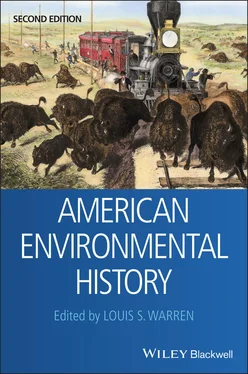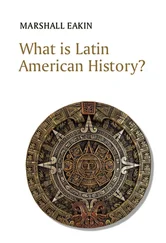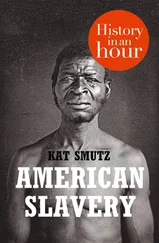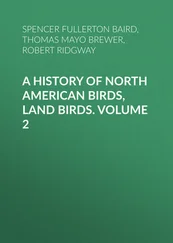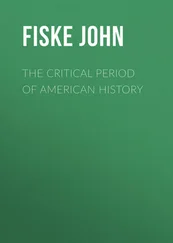1 The Natures of Indian America Before Columbus
Given that so many people believe that America before Columbus was a version of the Garden of Eden, the history since then is usually understood as a fairly straightforward story, which goes like this: when Indians dominated America, the place was beautiful and natural. When Europeans arrived, they trashed the place.
The truth is far more complicated and interesting, however. William Denevan explores pre-contact Indian America with an eye to seeing how Indians shaped and changed the natural worlds around them. To be sure, most Indians did not impose nearly as great a strain on natural environments as subsequent non-Indian settlers or modern industrial capitalism eventually would. But nonetheless, they did alter the earth around them in important ways. This points to a key insight of environmental history: all peoples change nature to achieve their notion of the good life. To suggest that any people does not do this – that some people are part of nature without being willing or able to change it – is to remove them from history and to dehumanize them.
As you read Denevan’s article, ask yourself how Native changes to the natural environment before 1500 differed from the kinds of alterations, modifications, and wholesale changes in nature that your society makes today. Is there any way in which they were similar? How does it change your perception of American history to consider that Indians did not live in a Garden of Eden?
The Pristine Myth: The Landscape of the Americas in 1492
William M. Denevan
( Annals of the Association of American Geographers 82(3) 1992: 369–385.)
This is the forest primeval …
Evangeline: A Tale of Acadie (Longfellow 1847)
What was the New World like at the time of Columbus? …
Scholarship has shown that Indian populations in the Americas were substantial [in 1492], that the forests had indeed been altered, that landscape change was commonplace. This message, however, seems not to have reached the public through texts, essays, or talks by both academics and popularizers who have a responsibility to know better ….
The evidence is convincing. By 1492 Indian activity throughout the Americas had modified forest extent and composition, created and expanded grasslands, and rearranged microrelief via countless artificial earthworks. Agricultural fields were common, as were houses and towns and roads and trails. All of these had local impacts on soil, microclimate, hydrology, and wildlife. This is a large topic, for which this essay offers but an introduction to the issues, misconceptions, and residual problems. The evidence, pieced together from vague ethnohistorical accounts, field surveys, and archaeology, supports the hypothesis that the Indian landscape of 1492 had largely vanished by the mid-eighteenth century, not through a European superimposition, but because of the demise of the native population. The landscape of 1750 was more “pristine” (less humanized) than that of 1492.
The size of the native population at contact is critical to our argument. The prevailing position, a recent one, is that the Americas were well-populated rather than relatively empty lands in 1492. In the words of the sixteenth-century Spanish priest, Bartolomé de las Casas, who knew the Indies well:
All that has been discovered up to the year forty-nine [1549] is full of people, like a hive of bees, so that it seems as though God had placed all, or the greater part of the entire human race in these countries.
(Las Casas, in MacNutt 1909, 314)
Las Casas believed that more than 40 million Indians had died by the year 1560. Did he exaggerate? In the 1930s and 1940s, Alfred Kroeber, Angel Rosenblat, and Julian Steward believed that he had. The best counts then available indicated a population of between 8 and 15 million Indians in the Americas. Subsequently, Carl Sauer, Woodrow Borah, Sherburne F. Cook, Henry Dobyns, George Lovell, N. David Cook, myself, and others have argued for larger estimates. Many scholars now believe that there were between 40 and 100 million Indians in the hemisphere (Denevan 1992). This conclusion is primarily based on evidence of rapid early declines from epidemic disease prior to the first population counts (Lovell 1992).
I have recently suggested a New World total of 53.9 million (Denevan 1992, xxvii). This divides into 3.8 million for North America, 17.2 million for Mexico, 5.6 million for Central America, 3.0 million for the Caribbean, 15.7 million for the Andes, and 8.6 million for lowland South America. These figures are based on my judgment as to the most reasonable recent tribal and regional estimates. Accepting a margin of error of about 20 percent, the New World population would lie between 43 and 65 million. Future regional revisions are likely to maintain the hemispheric total within this range…. In any event, a population between 40 and 80 million is sufficient to dispel any notion of “empty lands.” Moreover, the native impact on the landscape of 1492 reflected not only the population then but the cumulative effects of a growing population over the previous 15,000 years or more.
European entry into the New World abruptly reversed this trend. The decline of native American populations was rapid and severe, probably the greatest demographic disaster ever (Lovell 1992). Old World diseases were the primary killer. In many regions, particularly the tropical lowlands, populations fell by 90 percent or more in the first century after contact. Indian populations (estimated) declined in Hispaniola from 1 million in 1492 to a few hundred 50 years later, or by more than 99 percent; in Peru from 9 million in 1520 to 670,000 in 1620 (92 percent); in the Basin of Mexico from 1.6 million in 1519 to 180,000 in 1607 (89 percent); and in North America from 3.8 million in 1492 to 1 million in 1800 (74 percent). An overall drop from 53.9 million in 1492 to 5.6 million in 1650 amounts to an 89 percent reduction (Denevan 1992, xvii–xxix). The human landscape was affected accordingly, although there is not always a direct relationship between population density and human impact (Whitmore et al. 1990, 37).
The replacement of Indians by Europeans and Africans was initially a slow process. By 1638 there were only about 30,000 English in North America (Sale 1990, 386), and by 1750 there were only 1.3 million Europeans and slaves (Meinig 1986, 247). For Latin America in 1750, Sánchez-Albornoz (1974, 7) gives a total (including Indians) of 12 million. For the hemisphere in 1750, the Atlas of World Population History reports 16 million (McEvedy and Jones 1978, 270). Thus the overall hemispheric population in 1750 was about 30 percent of what it may have been in 1492. The 1750 population, however, was very unevenly distributed, mainly located in certain coastal and highland areas with little Europeanization elsewhere. In North America in 1750, there were only small pockets of settlement beyond the coastal belt, stretching from New England to northern Florida (see maps in Meinig 1986, 209, 245). Elsewhere, combined Indian and European populations were sparse, and environmental impact was relatively minor.
Indigenous imprints on landscapes at the time of initial European contact varied regionally in form and intensity. Following are examples for vegetation and wildlife, agriculture, and the built landscape.
Vegetation
The Eastern Forests
The forests of New England, the Midwest, and the Southeast had been disturbed to varying degrees by Indian activity prior to European occupation. Agricultural clearing and burning had converted much of the forest into successional (fallow) growth and into semi-permanent grassy openings (meadows, barrens, plains, glades, savannas, prairies), often of considerable size. Much of the mature forest was characterized by an open, herbaceous understory, reflecting frequent ground fires. “The de Soto expedition, consisting of many people, a large horse herd, and many swine, passed through ten states without difficulty of movement” (Sauer 1971, 283). The situation has been described in detail by Michael Williams in his recent history of American forests: “Much of the ‘natural’ forest remained, but the forest was not the vast, silent, unbroken, impenetrable, and dense tangle of trees beloved by many writers in their romantic accounts of the forest wilderness” (1989b, 33). “The result was a forest of large, widely spaced trees, few shrubs, and much grass and herbage …. Selective Indian burning thus promoted the mosaic quality of New England ecosystems, creating forests in many different states of ecological succession” (Cronon 1983, 49–51).
Читать дальше
